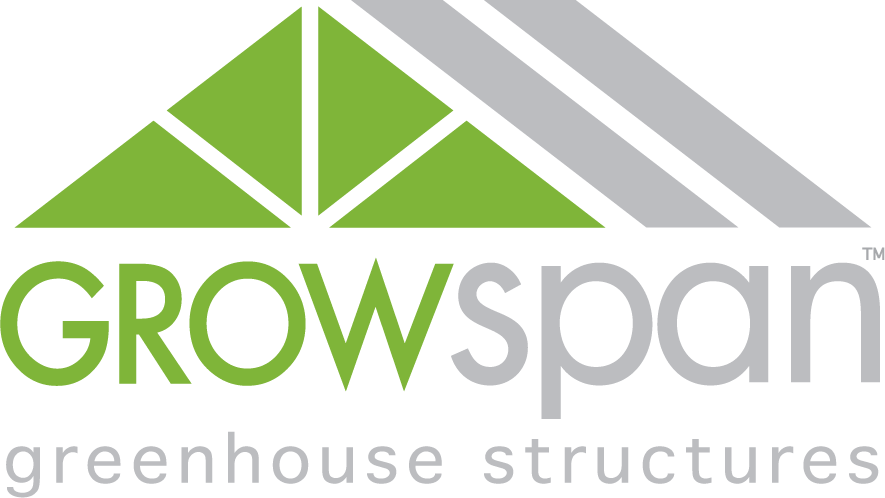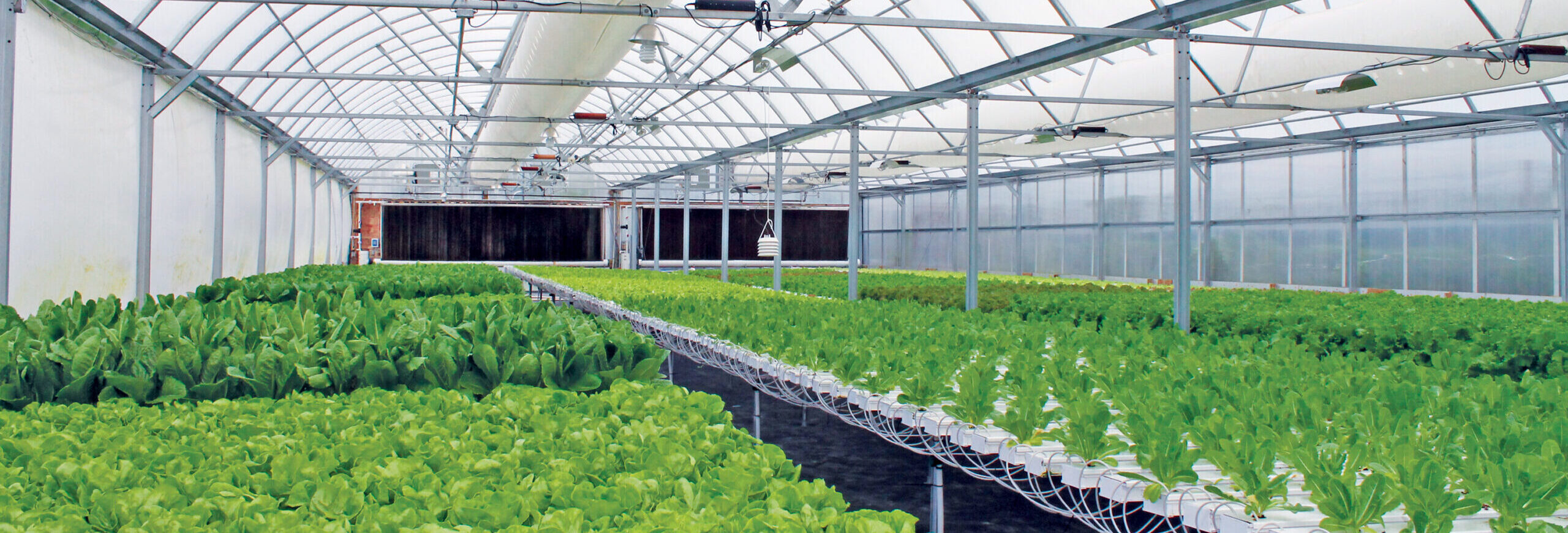Growing Smarter: An Overview Of A Hydroponic Greenhouse
As the world population grows, the demand for improved food production and sustainable practices becomes more and more prevalent. In the horticultural industry, hydroponic greenhouses are looked to as a viable solution to both issues. With their ability to generate larger quantities of produce, while also conserving resources, it’s no wonder such an effort has been made to advance hydroponic growing strategies over the last decade.
While the potential impact on a global scale is undeniable, it’s also important to look at what a hydroponic greenhouse can do for individual operations. Compared to conventional growing methods, like potting plants with soil, hydroponics offers improved efficiency and the potential for a dramatic increase in net profits. In addition to the usual benefits greenhouses provide, a hydroponic greenhouse helps operations take full advantage of their structure’s available space and streamlines commercial production.
For growers looking to implement a hydroponic greenhouse in their operation, they’ll first need to gather information and explore all their options. This means understanding how hydroponics functions within a greenhouse environment, the advantages it offers and finding a hydroponic greenhouse kit that makes sense for their operation.
HOW A HYDROPONIC GREENHOUSE WORKS
Hydroponics is a production method where plants are raised in various growing mediums and suspended in nutrient-rich water instead of soil. Depending on the system being used, plants are placed in individual slots or the chosen growing medium, like clay pellets or coco fiber, and are then given nutrients to help them grow.
In soil production, plants only have a limited time to absorb nutrients before they sink through the substrate, which wastes valuable food and diminishes growth. Instead of letting plants try to absorb nutrients through soil, hydroponics can deliver a solution directly to a plant’s root zone, supplying nutrients where they can be easily absorbed.
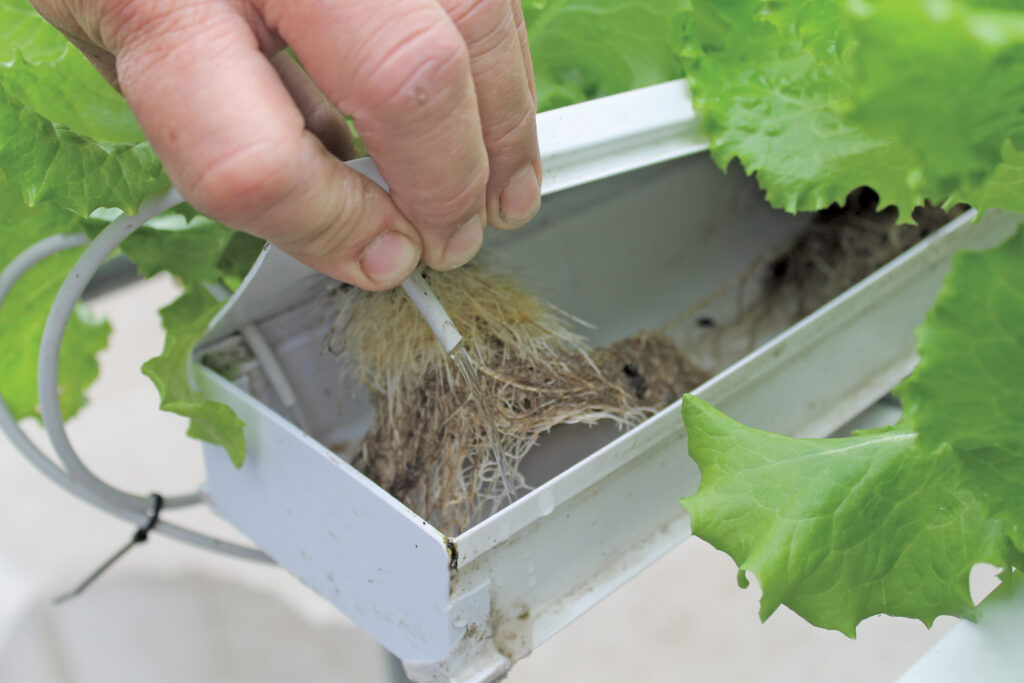
Inside a hydroponic greenhouse, improved nutrient delivery and superior growing conditions produce a cohesive environment for plants. An effective greenhouse cladding, like twin-wall polycarbonate, provides plants with valuable light transmission and diffusion, which facilitates photosynthesis and improved growth. Supplemental equipment can help a hydroponic greenhouse supply quality ventilation and climate control as well, creating a grow space that’s far more effective than outdoor cultivation.
A hydroponic greenhouse kit helps growers get the most out of their harvests. Whether a structure is short on room or growers are just trying to maximize their square footage, hydroponic systems are efficient enough to help most operations boost production in their hydroponic greenhouse.
Sign up now for more information
ADVANTAGES OF GROWING IN A HYDROPONIC GREENHOUSE
Hydroponic greenhouse kits provide growers with a number of advantages over conventional growing strategies. Many of these benefits equate to long term cost savings, and when optimized, also increase profits from each harvest.
Water Efficiency – Hydroponics are designed to streamline water delivery to plants and help operations conserve their water supply. With the help of timers, growers can set their water and nutrients to be delivered at certain times, ensuring water isn’t used unnecessarily. Most hydroponic designs even recirculate water, further reducing water usage and waste by recycling a hydroponic greenhouse’s supply.
Reduced Risk Of Pests and Disease – While a hydroponic greenhouse kit is built to protect plants from outside pollutants, the growing equipment also helps contribute to that controlled environment. Soil is more susceptible to pests and disease, because it provides an environment where they can develop and multiply, whereas a clean and well-maintained hydroponic setup helps ensure only water and nutrients are delivered to plants. This makes it difficult for disease to proliferate or for pests to find a home within the hydroponic greenhouse.
Better, Larger, Year-Round Yields – Three of the most important factors in commercial production are quantity, quality and harvest frequency. A hydroponic greenhouse kit provides the ultimate controlled environment, using efficient watering, effective lighting and climate control to produce more robust yields, year-round, that are also higher in quality compared to traditionally grown plants.
Less Labor And Greater Automation Potential – In standard growing practices, manual labor is one of the most expensive and time consuming factors for operations. A hydroponic greenhouse can take full advantage of automation, negating the need for manual labor in multiple ways. Although growers can’t quite “set it and forget it”, automated watering with hydroponics helps operations direct their efforts to other aspects of their grow and eliminates tedious tasks, like weeding.
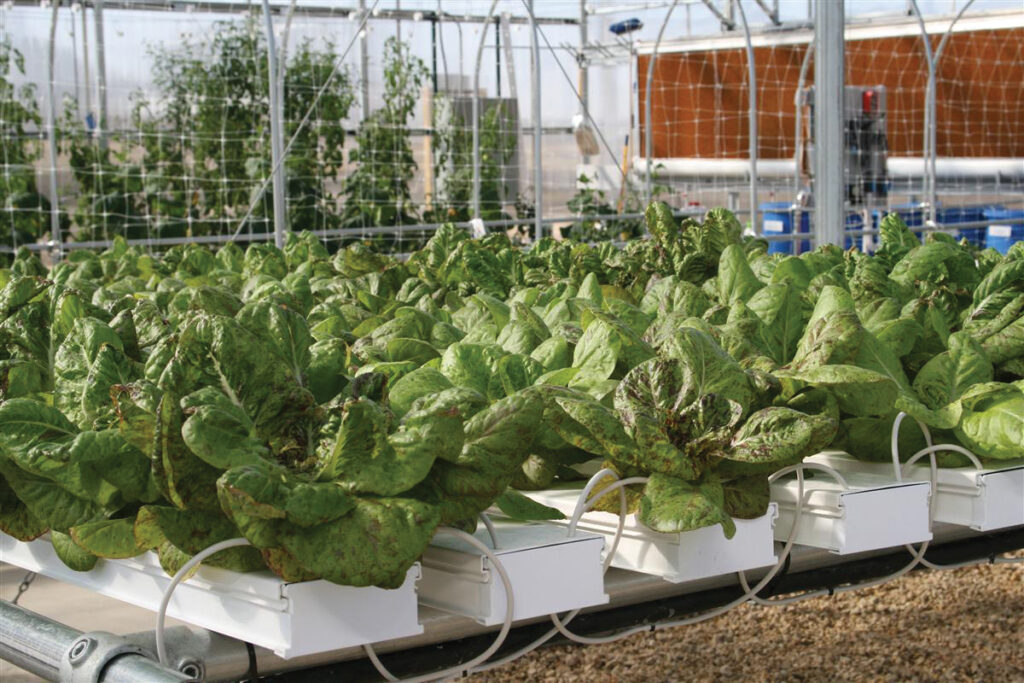
TYPES OF HYDROPONIC SYSTEMS
There are various methods of hydroponic growing, each of which may suit different operations. GrowSpan offers an extensive HydroCycle product line, which includes a collection of hydroponic systems that can help growers maximize their space’s potential. With the help of a GrowSpan Greenhouse Specialist, these systems can be customized to accommodate nearly any hydroponic greenhouse kit, ensuring there’s an appropriate set up for every operation.
HydroCycle Dutch Bucket Systems, also referred to as bato buckets, create an ideal base for larger plants and vine crops, like tomatoes and cucumbers. This system uses drip irrigation where nutrients are delivered to the surface of the growing media and can either be set up as drain to waste or recirculating. Dutch buckets are convenient for growers who may want to adjust the spacing of their plants or add additional plants down the line, if they have ample room in their hydroponic greenhouse.
GrowSpan’s NFT Systems have a versatile design that allows them to fit in smaller hydroponic greenhouse kits or match the largest scale commercial operations. They are commonly used for lettuce production, but when utilized in a hydroponic greenhouse kit, can create a controlled growing environment for just about any crop. For these reasons, NFT, or nutrient film technique, is the most widely used hydroponic growing method amongst commercial growers. In this system, roots are suspended in a channel, while a shallow stream of nutrient solution recirculates through the bottom of the channel, delivering food to plants and minimizing water and nutrient waste.
Ebb and Flow Systems also allow growers to produce a large variety of crops. This hydroponic system suspends crops in a tray that is then flooded at regular intervals with nutrient-rich water. With flood trays that feature preformed channels on the bottom, plant roots are kept dry and out of any puddles when the tray isn’t flooded, which keeps the plants healthy. The low maintenance design reduces evaporation and the proliferation of algae, making it more effective over time.
Vertical Aeroponics Systems, another versatile option, can also meet the needs of a small hobbyist space or a commercial scale hydroponic greenhouse. The compact design can help operations maximize production, allowing them to produce 220 plants in less than 23 square feet. In these systems, suspended roots are supplied with a nutrient-rich mist that delivers sufficient nourishment and maximizes oxygen. This helps plants grow healthier, more rapidly and can significantly boost a hydroponic greenhouse’s profitability.
OBTAINING A HIGH-QUALITY HYDROPONIC GREENHOUSE KIT
When a grower plans to purchase a hydroponic greenhouse kit for their operation, it’s important they work with reputable industry professionals who manufacture reliable structures. Engineered hydroponic greenhouse kits allow growers to obtain third-party stamped blueprints that certify the strength of their structure and prove what weather it can handle. Greenhouses are often utilized in harsh climates, so getting a hydroponic greenhouse kit that’s designed by an engineer ensures it can meet all local building codes and withstand heavy snow and wind loads.
A hydroponic system will only function as well as the hydroponic greenhouse kit it’s housed in, and with GrowSpan, growers can consult a Greenhouse Building Specialist throughout the entire purchase process to find their ideal structure. GrowSpan hydroponic greenhouse kits are constructed using the highest quality materials to last operations years without breaking down.
High-quality structures help create the best growing conditions for plants and further contribute to the symbiotic relationship between greenhouses and hydroponic growing. With a GrowSpan hydroponic greenhouse kit and the right hydroponic system, growers can take full advantage of their space and maximize crop production.
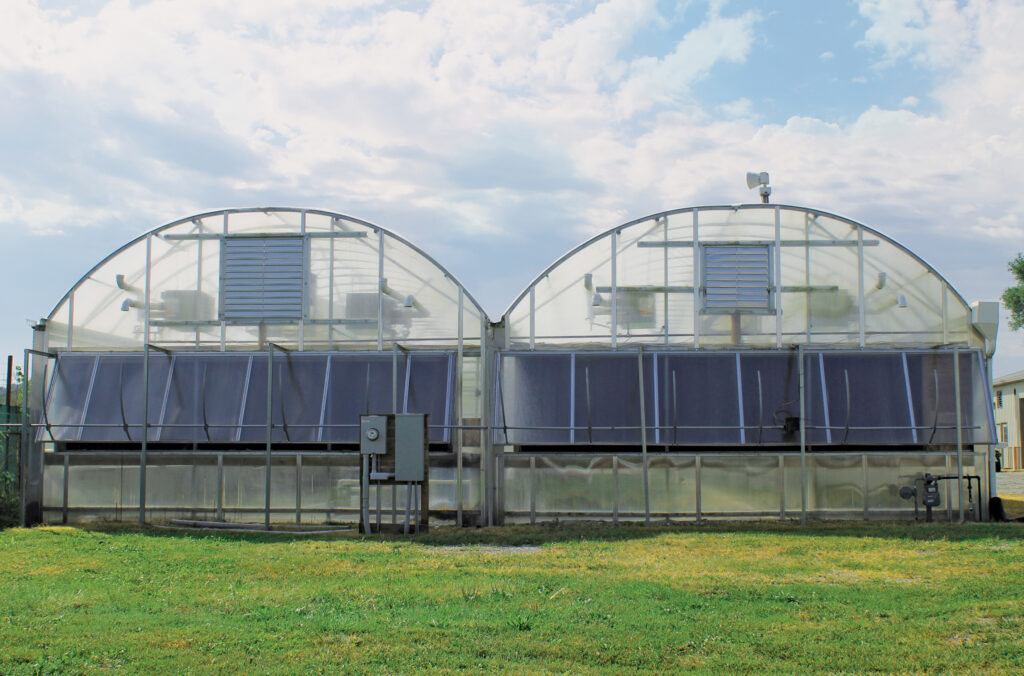
By employing a hydroponic greenhouse, growers can not only have a positive impact on the planet and global population, but also boost the prospects of their own operation. Hydroponic systems help growers decrease long-term costs and labor requirements while simultaneously improving the size and quality of their yields, setting them up for years of profitability.
To learn more about implementing a hydroponic greenhouse in your operation, call or REQUEST A QUOTE today.
